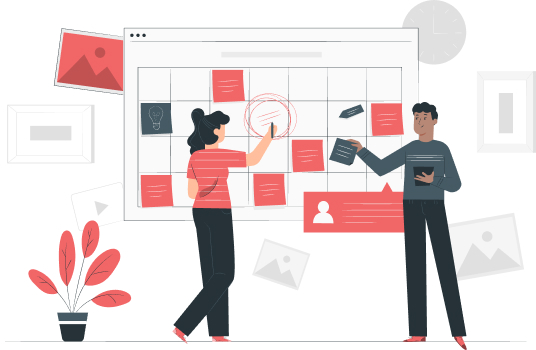Multimedia e-learning resources—when delivered through a user-friendly LMS—can transform how Registered Training Organisations (RTOs) in Australia deliver and manage education. These resources blend visuals, videos, simulations, audio, and interactive activities to create rich, engaging learning experiences tailored to diverse student needs.
In 2025, with more learners expecting flexible, digital-first solutions, the use of multimedia isn’t just a nice-to-have—it’s essential for learner retention, engagement, and compliance.
In This Article
What Is Multimedia in E-Learning?
Multimedia e-learning refers to the use of multiple content formats—like video, audio, graphics, text, and interactivity—in structured digital courses or online training. Delivered through an affordable LMS platform, multimedia content allows trainers to build dynamic and inclusive lessons that improve understanding and reduce dropout rates.
A well-designed user-friendly LMS supports these formats and ensures that RTOs can deliver content that is:
- Trackable for compliance and student progress
- Accessible to all learners, including those with diverse learning needs
- Flexible across devices and bandwidth environments
7 Benefits of Multimedia in E-Learning for RTOs
1. Enhanced Learner Engagement with Multimedia Content
Multimedia keeps learners engaged by presenting information in varied, stimulating formats. Video case studies, clickable infographics, and scenario-based simulations hold attention far better than static PDFs or text-heavy slides.
2. Better Knowledge Retention
Studies show that people retain information more effectively when it’s presented using both visual and auditory channels. By combining text, narration, and animation, multimedia taps into dual coding theory—reinforcing learning from multiple cognitive angles.
3. Real-World Simulation and Application
Interactive tools like drag-and-drop activities or branching scenarios allow learners to apply knowledge in simulated environments. This makes training more relevant and memorable—especially for vocational subjects like aged care, construction, or business services.
4. Accessibility and Inclusivity
When paired with thoughtful design, multimedia can serve learners with diverse needs. For example:
- Videos should include transcripts or closed captions
- Infographics can use alt-text for screen readers
- Audio content should be paired with written summaries
These design choices also support SEO strategies—transcripts help search engines crawl and index content, improving discoverability.
5. Flexibility Across Learning Styles
Multimedia caters to all types of learners:
- Visual: diagrams, process charts, and animations
- Auditory: podcasts, voiceovers, and interviews
- Kinesthetic: clickable activities and simulations
This learner-centric approach makes training more effective—especially in vocational education, where engagement can vary widely.
6. Scalable, Cost-Effective Delivery
Once created, multimedia content can be reused across multiple cohorts and campuses. RTOs can reduce the need for face-to-face training, printed materials, and in-person assessments—cutting down operational costs over time in vocational training.
7. Smarter Content Delivery with AI-Powered Multimedia
In 2025, Artificial Intelligence in education is enabling even smarter content delivery. Multimedia elements can now be adapted dynamically based on learner progress. For example:
- Slower learners receive extra visual aids
- Advanced learners get fast-tracked simulations
- AI chatbots offer additional support or explanation
AI in education & this kind of adaptive multimedia delivery is a growing edge of educational technology.
How can multimedia e-learning improve vocational outcomes?
By using real-world simulations and interactive modules, learners develop job-ready skills and apply theory in context—leading to stronger graduate outcomes.
What should RTOs look for in a multimedia-enabled LMS?
Look for a user-friendly LMS that supports multiple formats, has AI-driven reporting, and offers drag-and-drop content creation. These features simplify content delivery and help meet ASQA compliance standards.
Does multimedia reduce the need for face-to-face training?
Yes. With interactive videos, simulations, and automated assessments, RTOs can deliver complete learning experiences online—saving time and resources.
Final Thoughts
Multimedia in e-learning offers Registered Training Organisations a smarter, more engaging way to train Australia’s future workforce. By incorporating varied content types, accessible design, and adaptive learning techniques, RTOs can significantly enhance learner retention and compliance.
When delivered through a user-friendly LMS, multimedia becomes a powerful tool—not just for learning, but for business growth. Combine it with the latest in educational technology, and your training strategy won’t just meet expectations in 2025—it’ll lead the way.




